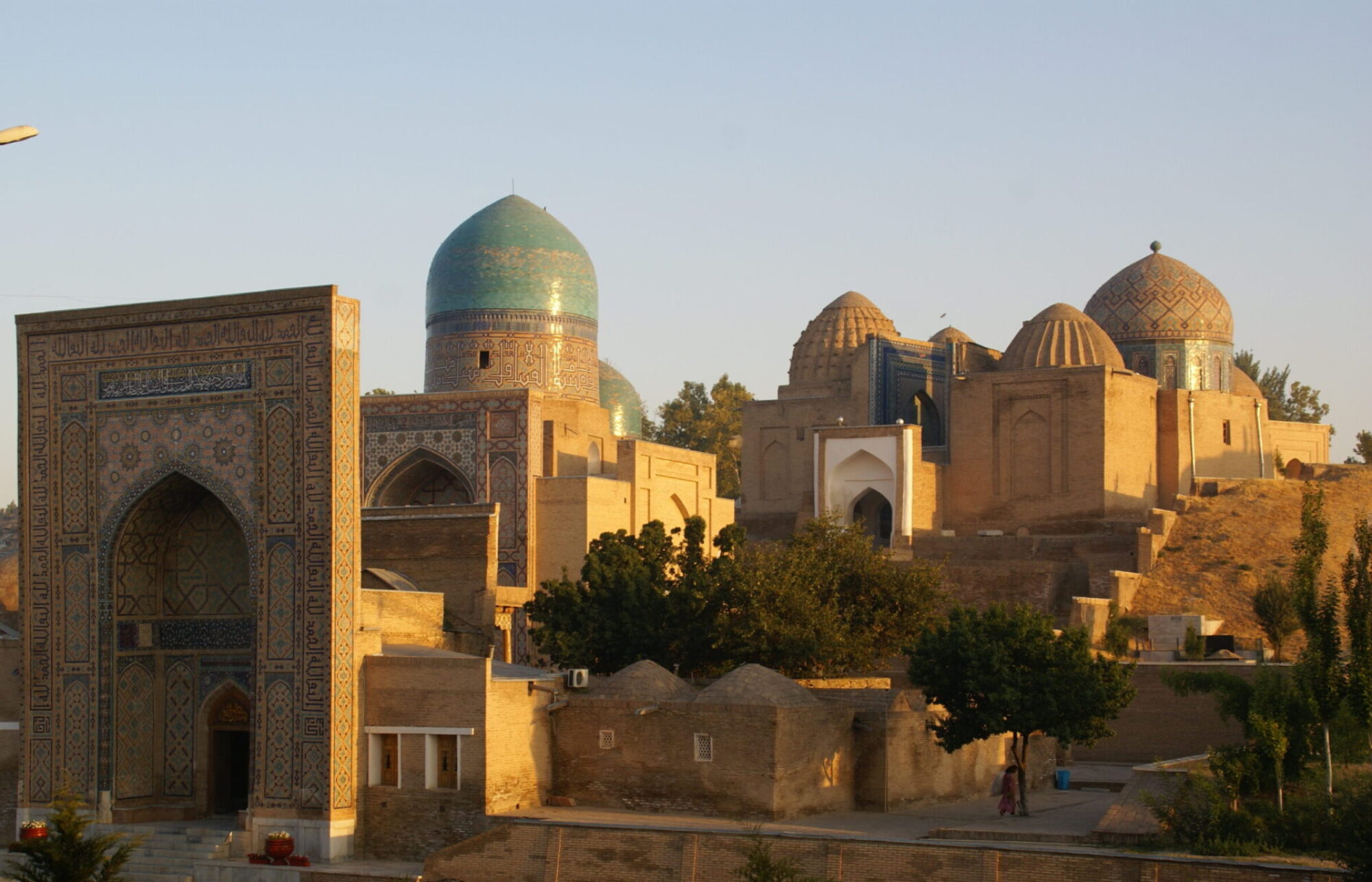The Ark of Bukhara is a massive fortress located in the citadel to the northwest of the city. Initially built around the 3rd century BC, the Ark has been home to the rulers of Bukhara for over a millennium. The structure was last known as the seat of the amir of Bukhara. Situated on an elevation of 15-18 m, the Ark has an irregular rectangular shape and covers an area of about 3 hectares. The northwestern corner is flanked by a prominent entrance. Archaeological excavations have shown that the Ark was constructed on a natural plateau covered by forest that occupied a smaller area of 1-2 hectares and was surrounded by a defensive wall assembled of mud brick and reed. The first fortress to be documented by local historians was built in the 7th century by the Bukhar Khudahs, a local Sogdian dynasty that ruled Bukhara until the Samanids. The first mosque in Bukhara was built in the citadel in 712, on the site of a former Buddhist and later Zoroastrian temple.
The Ark began to take its present form in the 16th century under the Uzbek Shaybanids and all its present buildings date from the last three centuries. By this time, the Ark had grown to house not only the amir, his family and retinue, but also the whole range of governmental offices organized in a complex of over 3,000 inhabitants providing a palace, harem, throne room, reception hall, office block, treasury, mosque, gold mint, dungeon and slave quarters. The present gateway was built by Nadir Shah in 1742 and consists of two towering bastions linked by a balcony of six porticoed windows.
During the Russian Civil War (1917-1922), the Ark was severely damaged by the troops of the Red Army under the command of Mikhail Frunze during the Battle of Bukhara in August-September 1920. Frunze ordered the Ark to be bombed by an aircraft, which left a large part of the structure in ruins.
At present, the Ark houses the collection of the Bukhara History Museum.

